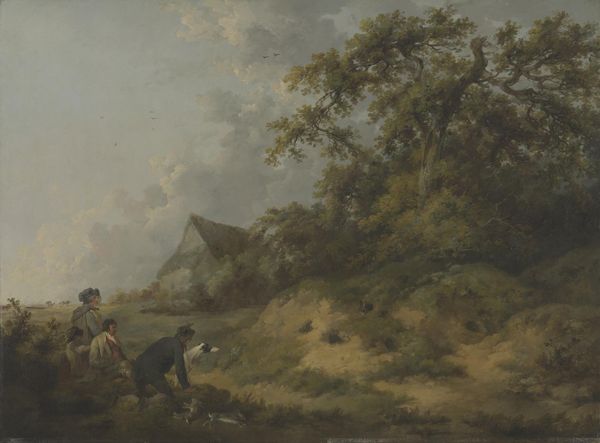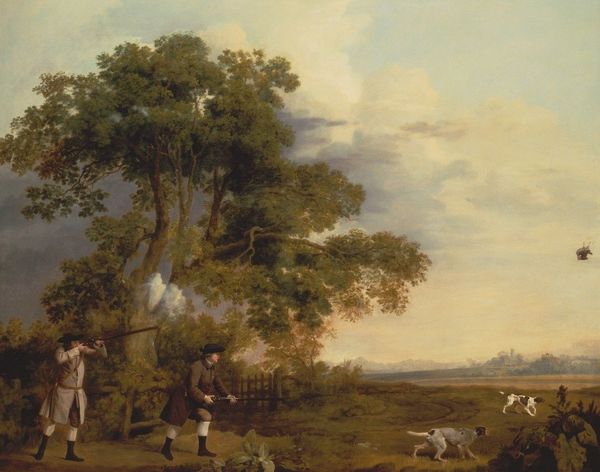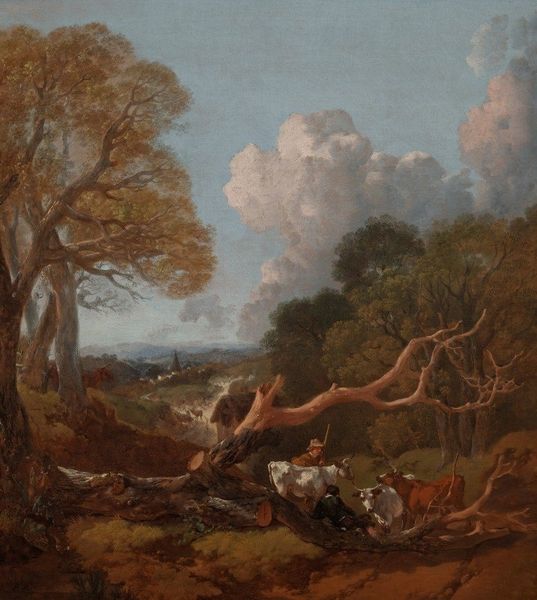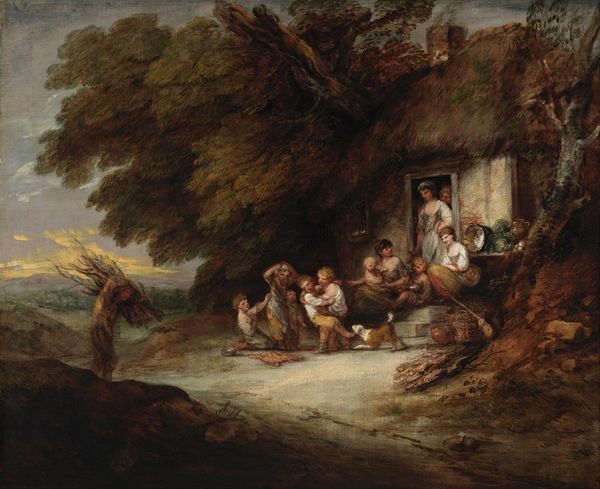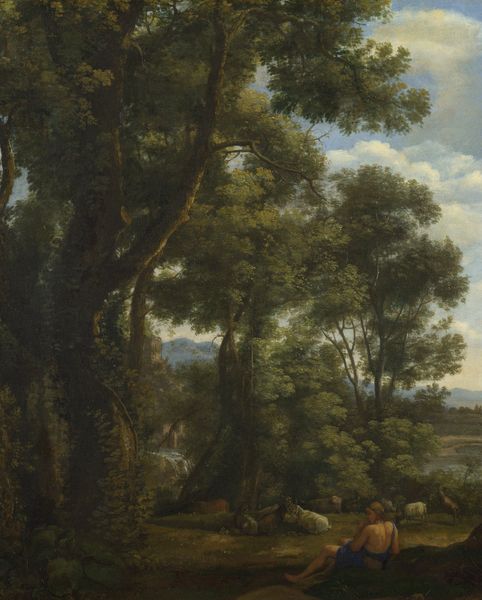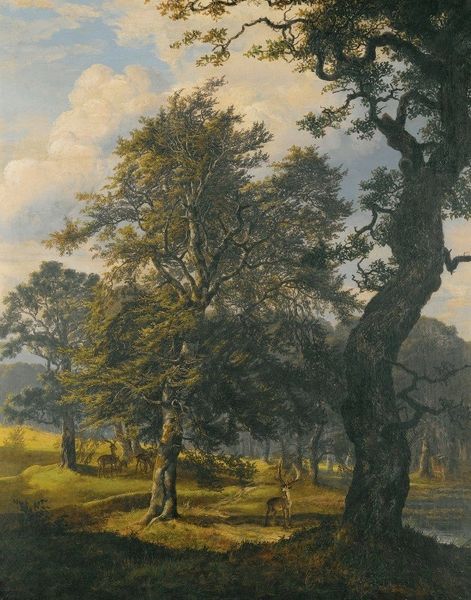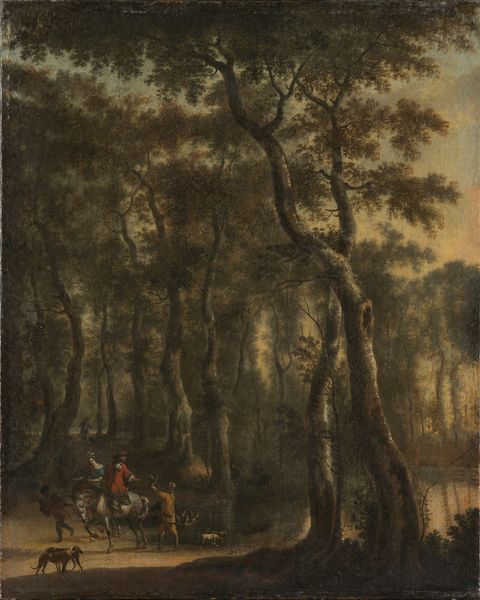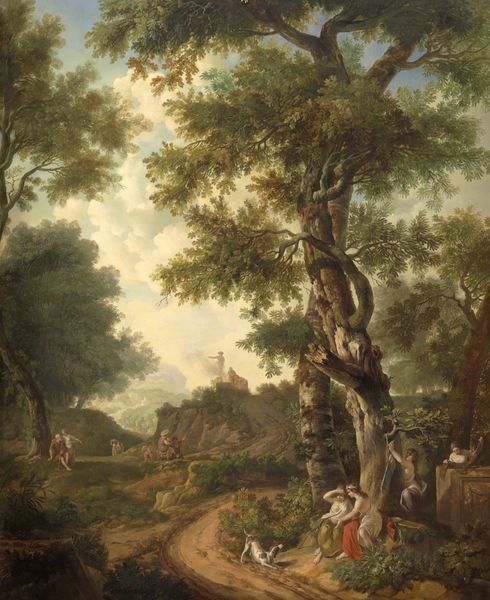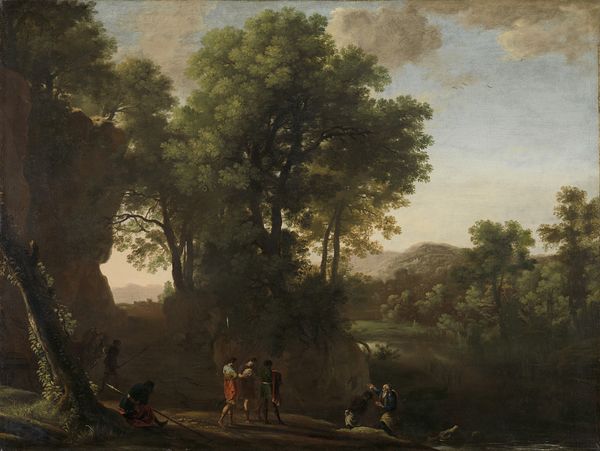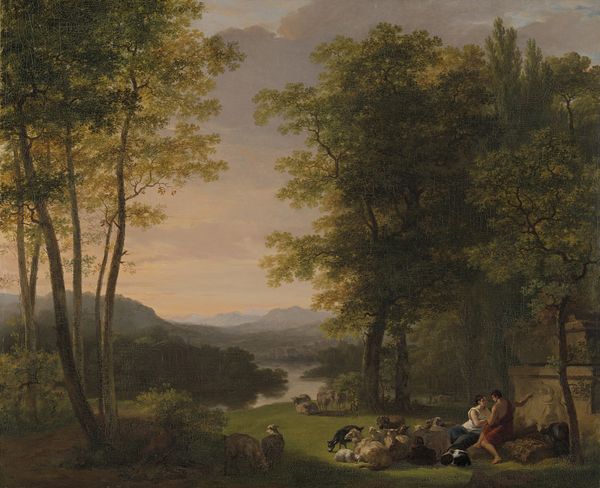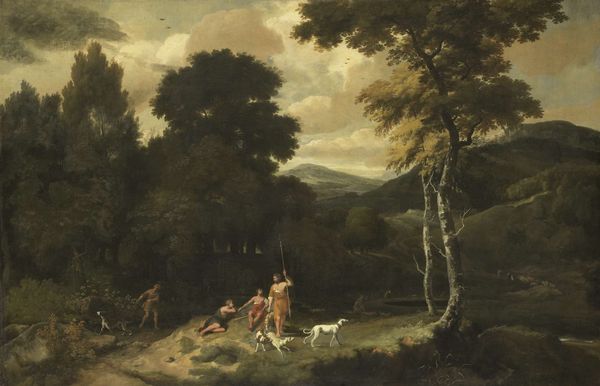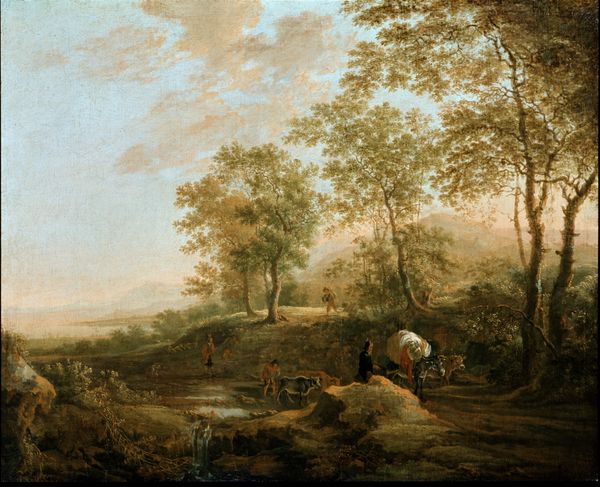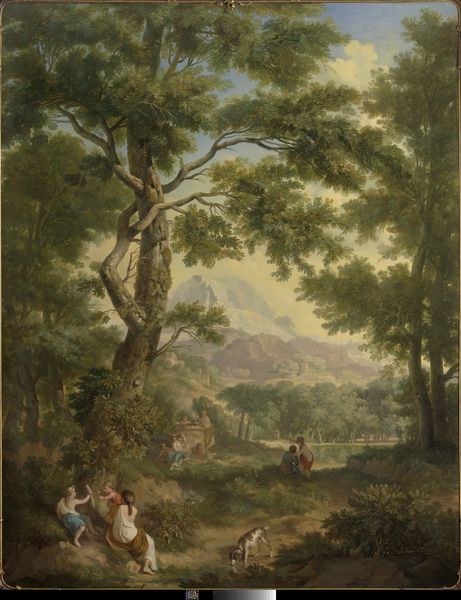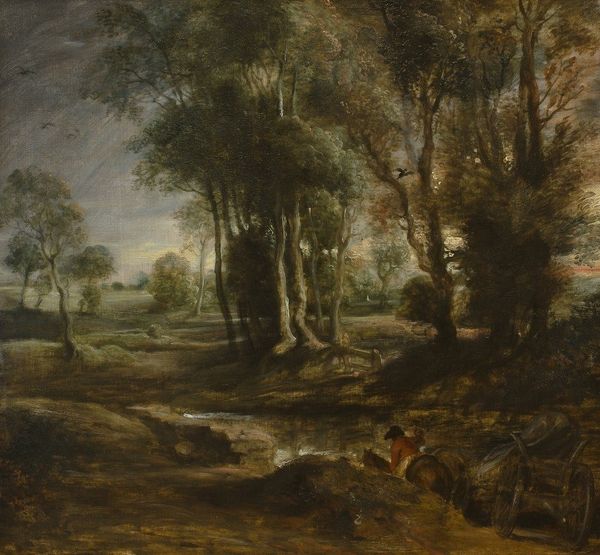
Copyright: Public Domain: Artvee
Editor: So, this is George Stubbs’s "A Repose after Shooting," painted around 1770, using oil on canvas. I'm struck by how still everything feels despite being a hunting scene; there’s almost a sense of melancholy about it. What do you see in this piece? Curator: The stillness you observe hints at the layers embedded in this seemingly simple genre scene. Look at the towering trees that frame the figures; they aren't merely background, but resonate with the established symbolism of the forest as a space of transformation, a place outside the order of daily life. It echoes the hunt itself – a temporary departure into primal instinct. What about the arrangement of figures - does that convey a meaning to you? Editor: Now that you mention it, the standing hunter presenting the kill to the seated figure feels almost ceremonial, like a ritual offering within this woodland “temple”. Curator: Precisely. This interplay suggests an inherited tradition and a continuity with the past. Even the dogs, though resting, hold a potent cultural significance. Dogs are frequent symbols of loyalty but can you consider another side to them in the painting? Editor: Perhaps the dog here embodies the hunter’s primal, instinctual self? Subdued now, but ever-present. Curator: Exactly! And consider this painting was made at the cusp of immense social upheaval. These images become ways of connecting with earlier cultures. Do you feel that connection? Editor: I do now! Seeing it as Stubbs drawing on those established visual codes makes me realize how much these images carry – they become these powerful capsules of memory. Curator: Indeed! It transforms our understanding of Stubbs – not just as a painter of horses, but as a recorder and interpreter of cultural symbols that endure through time.
Comments
No comments
Be the first to comment and join the conversation on the ultimate creative platform.
